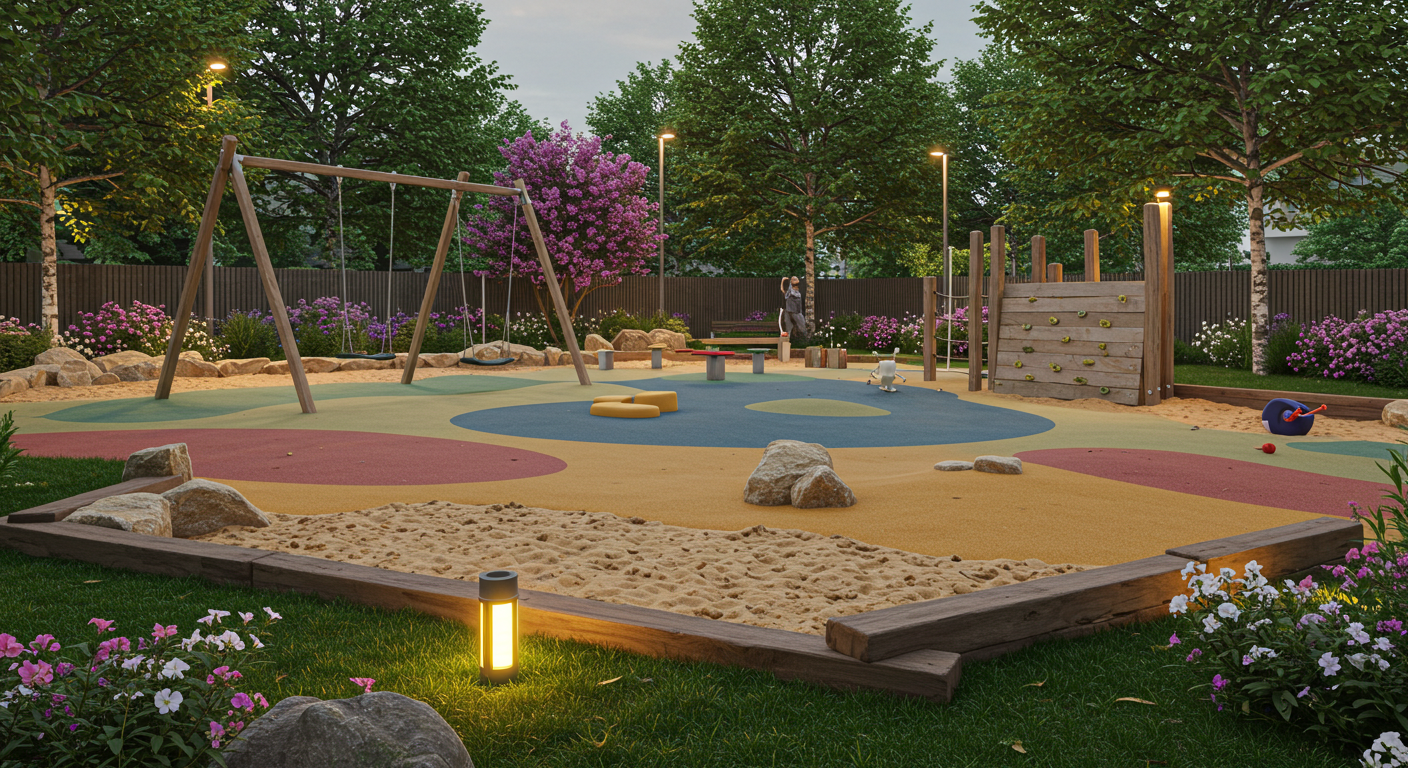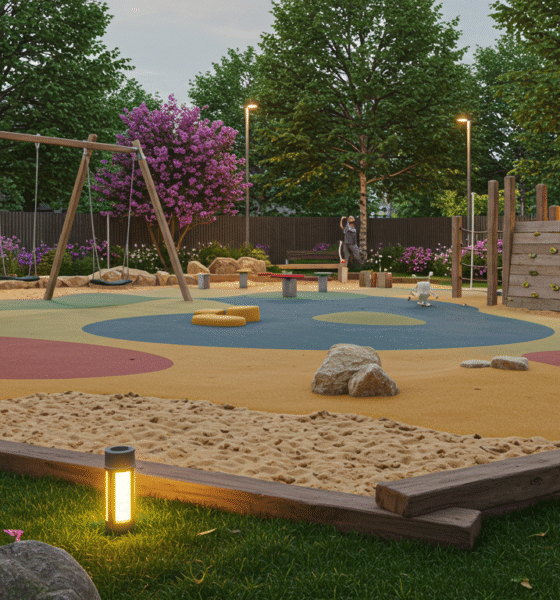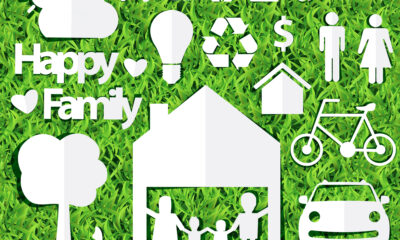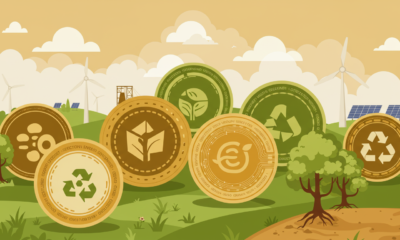

Features
Eco-Friendly Playground Designs Benefit Communities and the Planet
Did you know that eco-friendly playgrounds are becoming more popular than ever? One study estimates that the market for them was worth $1.8 billion a couple of years ago and is growing fast.
For decades, playgrounds have just been play spaces for kids. And sadly, the materials designers use to build these playgrounds have had a large carbon footprint. Just think of the treated wood, plastic, and steel that usually end up in landfills. It basically becomes waste. But as more people become environmentally aware, designers and manufacturers have started working with materials that create safer, more environmentally responsible spaces. This article looks at the problems and solutions involved in this shift. This is one of the things the World Playground Research Institute recently talked about.
Traditional Playground Materials Take a Toll on the Environment
Past generations have not had to consider the long-term environmental impact of the manufacture and installation of traditional materials. Making plastic and preparing treated lumber or steel for commercial swing sets and structures adds a tremendous amount of greenhouse gases to the environment. Sooner rather than later, these structures end up as waste. Then they slowly erode and release microplastics and other harmful chemicals.
As manufacturers provide more eco-friendly materials, the playground’s carbon footprint can come way down. HDPE, or recycled high-density polyethylene, is made from post-consumer plastic. Other manufacturers may use sustainably harvested wood or powder-coated steel. All of these options have longer life cycles and can be reused or recycled when they’ve outlived their usefulness on the playground. For designers, this means you’ll depend less on virgin materials and you can help divert waste from landfills. This is something anyone thinking of raising an eco-friendly child should be aware of.
Urban Heat Makes Playgrounds Uncomfortable
If you’ve spent any time on a playground with a black or asphalt surface, you know just how hot those spaces can get. Those surfaces trap heat and make the ground and anything in the vicinity too hot to even touch during the summer months. For many families. The playground is not even worth visiting during certain hours of the day. The heated surfaces can do so much more than just make kids uncomfortable. They can cause burning and lead to heat exhaustion. This is something we should think about as public parks are at risk of budget cuts.
Modern, sustainable playgrounds address these heat traps in many ways. First, they usually utilize reflective and natural materials like engineered wood fiber or cork. Second, many play spaces now have shade structures, tree plantings, and ground coverings to help keep the entire space cool. As a bonus, these solutions help with stormwater absorption and reduce runoff, so erosion of the local environment is no longer an issue.
Safety and Sustainability Don’t Have to Be Mutually Exclusive
There was a moment during the early shift toward more eco-friendly materials during which some eco-materials didn’t meet impact standards. This left kids who fell at greater risk of injury. As a result, many playground designers opted for rubber mats and plastic-based structures. The problem, however, is that those materials can off-gas volatile compounds and contribute to poor air quality for the families playing nearby.
Fortunately, modern eco-friendly modules and surface materials have addressed those past issues. Most now combine safety and sustainability through engineered wood fiber, recycled rubber, and plant-based alternatives. Each of these has been treated to remove harmful chemicals and provide shock absorption. So they’re both safe, durable in the long-term, and biodegradable.
Past “Parks” Have Disconnected Kids From Nature
For far too long, playgrounds have been made of steel and plastic and painted in big, bold colors like reds, blues, and yellows. These provide a stark contrast to nature, particularly when these structures are placed on asphalt, away from fields, trees, and streams. This setup has led many kids to have what experts call “nature deficit disorder.” Basically, kids who grow up in environments without natural spaces and elements miss out on valuable sensory and imaginative play.
The difference with sustainable parks is dramatic. These eco-friendly play spaces are usually designed to integrate with nature. Designers use boulders, logs, sand, native plants, and water features to create an immersive experience. So kids feel encouraged to engage in free play and explore different zones. These parks don’t compete with nature. They become extensions of it.
A Lack of Local Identity Has Led to a Disengaged Community
In many communities, designers and developers don’t consult with the community to plan new playgrounds going in. They simply plop a new structure down and let the citizens know. So you end up with a community that feels disengaged from its park systems. They don’t feel any real sense of identity or ownership over the space. To make matters worse, these playgrounds often need maintenance and even full replacement after just a few years.
In contrast, sustainable playgrounds usually involve the community throughout the design process. The parks and recreation department will typically ask members of the community to help address their neighborhood’s needs and reflect their values. Many districts have even established “playground stewardship” programs. Here, local volunteers will help with green space maintenance, lending to community pride and involvement. Even better, the modular recycled components are easier to repair and replace, so the play space has a longer lifespan.
In the end, sustainable playgrounds have grown past being merely “trendy.” Today, they represent the new standard for community spaces. Because they prioritize eco-friendly materials and climate-conscious design, these playgrounds address environmental challenges. They also provide more quality to the community and create cooler, safer, more engaging spaces for kids. As more cities and schools look toward greener infrastructure, playgrounds offer an ideal, high-impact starting point.


 Environment10 months ago
Environment10 months agoAre Polymer Banknotes: an Eco-Friendly Trend or a Groundswell?

 Environment11 months ago
Environment11 months agoEco-Friendly Home Improvements: Top 7 Upgrades for 2025

 Features9 months ago
Features9 months agoEco-Friendly Cryptocurrencies: Sustainable Investment Choices

 Features10 months ago
Features10 months agoEco-Friendly Crypto Traders Must Find the Right Exchange

















